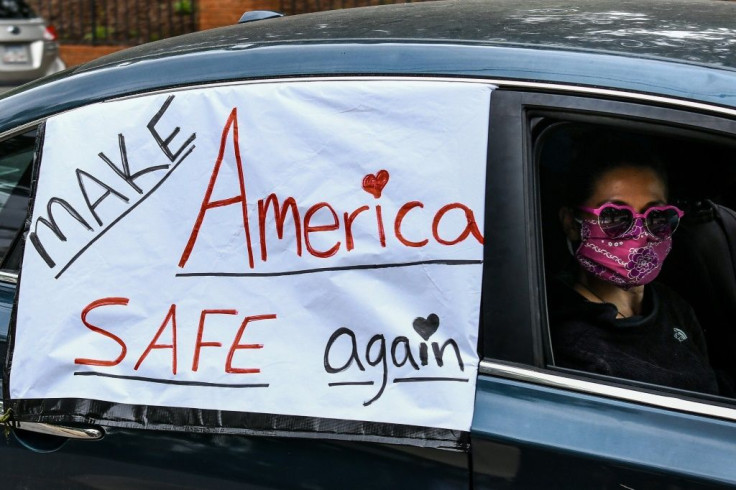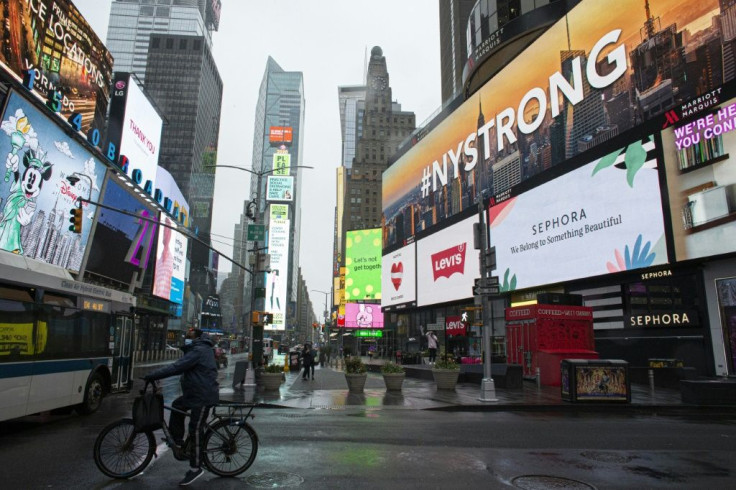Coronavirus US Deaths Surpass 55,000; But New Cases Have Reached 'Plateau', Expert Says

KEY POINTS
- Tom Inglesby, director of the Johns Hopkins Center for Health Security, says the U.S. might have reached the COVID-19 plateau
- New York reported a daily death toll from COVID-19 fewer than 400 for the first time
- On Monday, the U.S. will become the only country to record 1,000,000 confirmed cases of this disease
The casualty toll inflicted by COVID-19 on the United States since the first confirmed case on January 21 continues to set appalling records in pain and misery. The country's death toll from the disease topped 55,000 Sunday and on Monday, the U.S. will become the only country in the world to record 1,000,000 confirmed cases of this disease. One million Americans afflicted with COVID-19, a disease for which there still remains no cure or vaccine.
Americans can look with horror at the latest data showing 986,045 confirmed cases and 55,377 deaths as of 6:43 pm ET Sunday, according to data tracking website, Worldometer. The same data shows the number of cases Sunday was 25,394 larger than Saturday's.
The brightest light in this gloom are mounting indications the relentless devastation being wrought by this respiratory disease is finally leveling-off in some of the worst hit states.
The U.S. might be “near the end of the beginning” of the coronavirus pandemic, argues Tom Inglesby, director of the Johns Hopkins Center for Health Security.
“I would say that we are, for lack of better words, maybe near the end of the beginning of this pandemic in this country,” said Inglesby said during an interview on Fox News Sunday.
“We have reached a plateau nationally at this point. I mean trends can change over time, but at this point we have a plateau in new cases per day. Unfortunately, it is a very high plateau.”
More positive news from New York state, which with 293,991 cases and 22,275 deaths, is the hardest hit state. On Sunday, New York reported a daily death toll from COVID-19 fewer than 400 for the first time.
Gov. Andrew Cuomo said 367 New Yorkers died from from COVID-19 on Saturday, fewer than half of where it was at the height of the pandemic. More good news: new hospitalizations fell to about 1,000 on Saturday. Cuomo said the drop can mostly be put down to the efforts of New Yorkers adhering to social distancing.
"Government really can't act unless the people fully support the action," said Cuomo. "What we have done here, government couldn't do. It was a function of what people did."

Cuomo, however, saw no cause for joy in the lower numbers. Cuomo saw the latest numbers as "only not terrible news compared to where we were." He referred to Saturday's death toll as "horrific."
"There is no relative context to death. Death is death," said Cuomo. "367 people passed. 367 families."
The drop in the number of new daily infections has, however, convinced Cuomo to release a preliminary plan to reopen the state's economy. He said the plan is a multiphase approach that will see some business sectors opening sooner than others. Cuomo said he'll abide by the federal re-opening guidelines released the other week to determine when and how soon to re-open the state for business. His statement runs counter to that of vice president Mike Pence, who on Saturday said the pandemic could be "largely" behind Americans as early as Memorial Day Weekend.
“If you look at the trends today, I think by Memorial Day weekend we will largely have this coronavirus epidemic behind us,” said Pence to Fox News’ Geraldo Rivera. “State and local officials will begin to reopen activities; you’re going to see states ahead here begin to do that.”
Inglesby took issue with Pence's far too optimistic estimate, however. He noted the continuing growth in the number of new cases as evidence “we are not out of the woods by any means, in terms of this pandemic.”
“At this point, if you go state by state, you see in about half of the country, the numbers are still rising day by day, and in about another third of the country there seems to be a leveling off, and only in a minority of the country the numbers are actually coming down day by day. So, I don't think it's likely that we will be in that position by Memorial Day.”
© Copyright IBTimes 2025. All rights reserved.





















